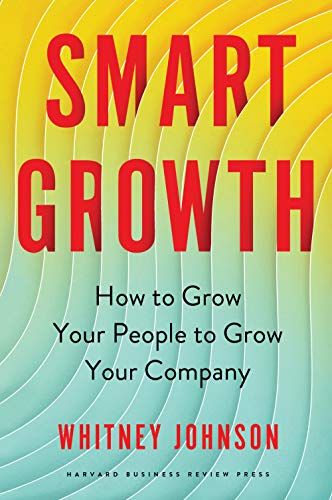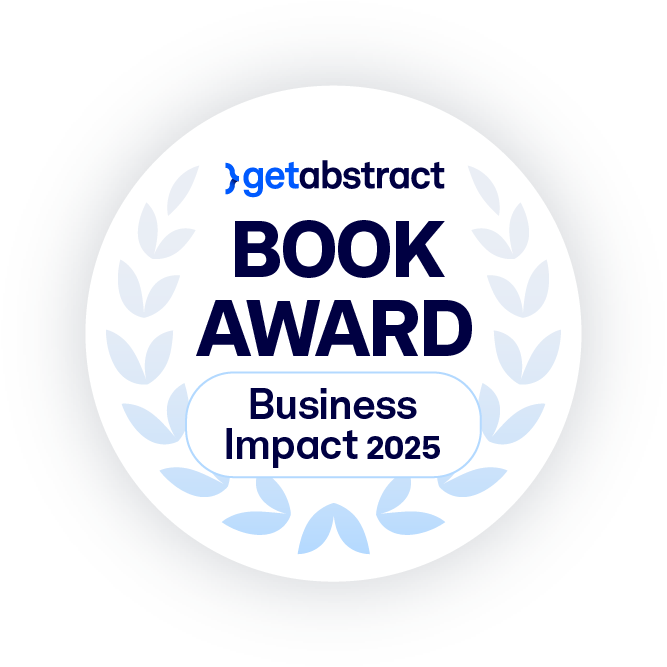Talent development authority Whitney Johnson delivers a simple but memorable model of learning that builds on the classic S curve of the diffusion of innovation, which seeks to explain why, how and at what speed learning takes place.

Help Employees Grow
One of the 50 leading business thinkers in the world – named number eight in 2021 by Thinkers50 – Whitney Johnson divides learning into six stages, each bringing its own challenges and rewards. Sharing dozens of stories from people who have gained new skills, boosted their careers and helped others learn, she reminds readers that without growth, the brain stagnates – and that learning should count among everyone’s inalienable rights. Johnson’s best-selling book has garnered praise from leading adult learning experts including Stephen Covey, Kim Scott and Rita McGrath.
Attend to Your Own Learning First
Johnson makes the case that a leader’s primary role is to help people grow. For a company to keep learning and growing, after all, its people must do the same. When people stop learning, warns Johnson, they stagnate, becoming disengaged and bored.
Healthy longevity at any organization is driven by a worker’s perception of their opportunities to grow and develop.Whitney Johnson
But before you support others, prioritize your own growth, says Johnson. To break through personally, commit to self-innovation – the process of disrupting yourself. Move through successive learning cycles, then help your people do the same.
Follow a Six-Stage S Curve
Johnson likens her “S-curve of learning” to the well-known user adoption curve for innovations. It begins at the bottom left of the S, at what Johnson refers to as the “Explorer” stage. Here, says Johnson, carefully investigate and assess your options, well ahead of committing. Smart growth, she argues, demands analysis and deliberate choice to reduce the risk of choosing errant paths. Many possibilities for exploration exist, but don’t allow choice to paralyze you.
Johnson cautions that you might find this process draining. She hopes you won’t get discouraged and will press on to determine a challenging but doable learning goal that fits with your values and aspirations – one whose returns outweigh the costs. This balance will give you a firm footing from which to progress but will also stretch and challenge you.
After you’ve made your choice, she advises you to seek data and other evidence to support or refute your decision. She calls this the “Collector” stage. Here, says Johnson, analyze the facts, assess your experiences and assemble your data and information into a big picture by creating an action board – a collage of images that reflect your aspirations. Invite feedback from others and consider it objectively, remaining open to suggestions. If everything still checks out, press on.
Be the person who decides where and how you will invest your most valuable resources: your time and attention.Whitney Johnson
At this point, Johnson suggests that you start calling yourself whatever it is you aspire to be – a programmer, a project manager, a violinist. Doing so, she says, will connect your aspirations with your identity, making it more likely you’ll stick to the learning process.
Now, Accelerate Up the Curve
Through the study of neuroscience, Johnson has found that when you create new neural connections through learning, your brain rewards you by releasing pleasure-inducing neurochemicals. She calls this the “Accelerator” stage because learning quickens.
The S Curves of Learning we explore and ultimately choose to pursue should be true to who we want to be.Whitney Johnson
Johnson connects learning to three pillars of motivational theory: competency, the capable feeling you get when you know what you’re doing; autonomy, a sense of agency in your work; and relatedness, the pleasure of working and learning with others. With the certainty you experience in the Accelerator stage, the learning comes almost automatically. She compares it to psychologist Mihaly Csikszentmihalyi’s “flow” state, in which you experience intense focus and pleasure in your work.
Next, Embrace the Change
The fourth stage is what Johnson refers to as “Metamorph.” Your learning and growth have become part of your identity – you’ve changed. At this stage, avoid distractions and triggers that can interrupt your focus. Eat well, exercise, and get sufficient sleep – healthy practices keep your mind sharp and enhance brain growth. Learn to say no to requests and opportunities that could pull you off track. Introduce new challenges if things begin to feel easy.
It is possible for human beings to stop learning and growing, but it is not possible for them to be content with it.Whitney Johnson
As a leader, Johnson advises you to coach your team members through the Acceleration and Metamorph stages by helping them prioritize their efforts. Keep them challenged, grant them autonomy to determine how to do their work, and give them freedom to say no to distractions. Encourage teamwork and collaboration.
Finally, Celebrate Your Growth
You’ve finally reached the summit and the end of the S Curve; Johnson calls this the “Anchor” stage, and suggests that you pause to celebrate and reflect on your achievement before you set out to explore other S Curves.
Johnson cautions that as you think back on your journey, you might experience a letdown. She suggests that you embrace this bittersweet feeling as it will help seal your memory of accomplishment and propel you toward what comes next.
Now, Do It All Over Again
Johnson calls the sixth and final stage the “Mountaineer,” where you continue to grow by finding and scaling new peaks. That’s right: Johnson says go back to the Explorer stage and start looking for your next S Curve.
The object of all life is development, and everything that lives has an inalienable right to all the development it is capable of attaining. writer Wallace D. Wattles
Continuous learning, says Johnson, keeps your brain nimble and adaptable. If you stop learning for too long, you’ll lose neural plasticity. When you linger on a peak, you won’t just get bored and hit a plateau – you’ll probably experience stagnation, where you start to lose mastery of what you once knew. Ideally, boredom and restlessness will compel you to get off the peak and back on a new learning curve.
As a leader, Johnson advises you to recognize and celebrate people who reach the top of a curve, but keep them moving by providing growth opportunities and new projects.
Build a Learning Ecosystem
Johnson advises leaders to help their team members choose S Curves that will move them toward their personal and professional goals and that also align with organizational needs. Your team members need your support, says Johnson, including time, tools, resources and one-on-one meetings with you for encouragement and to discuss adjustments. Track your people’s progress carefully, so that you can assess where they reside on the curve, and better support their progress through all six stages of growth.
We are responsible for making our own life decisions. But we achieve very little by ourselves.Whitney Johnson
Throughout, Johnson discusses the ideal ratio of employees to have at each stage in the curve – some launching, some experiencing steep growth in the middle, and others celebrating mastery at the top. She means you too. Stay constantly moving along the S-curve of learning.
Additional books on making the most of the learning process include Hyper-Learning by Edward D. Hess, Hardwired to Learn by Teri Hart and Life Long Learning by Michelle Weise.












